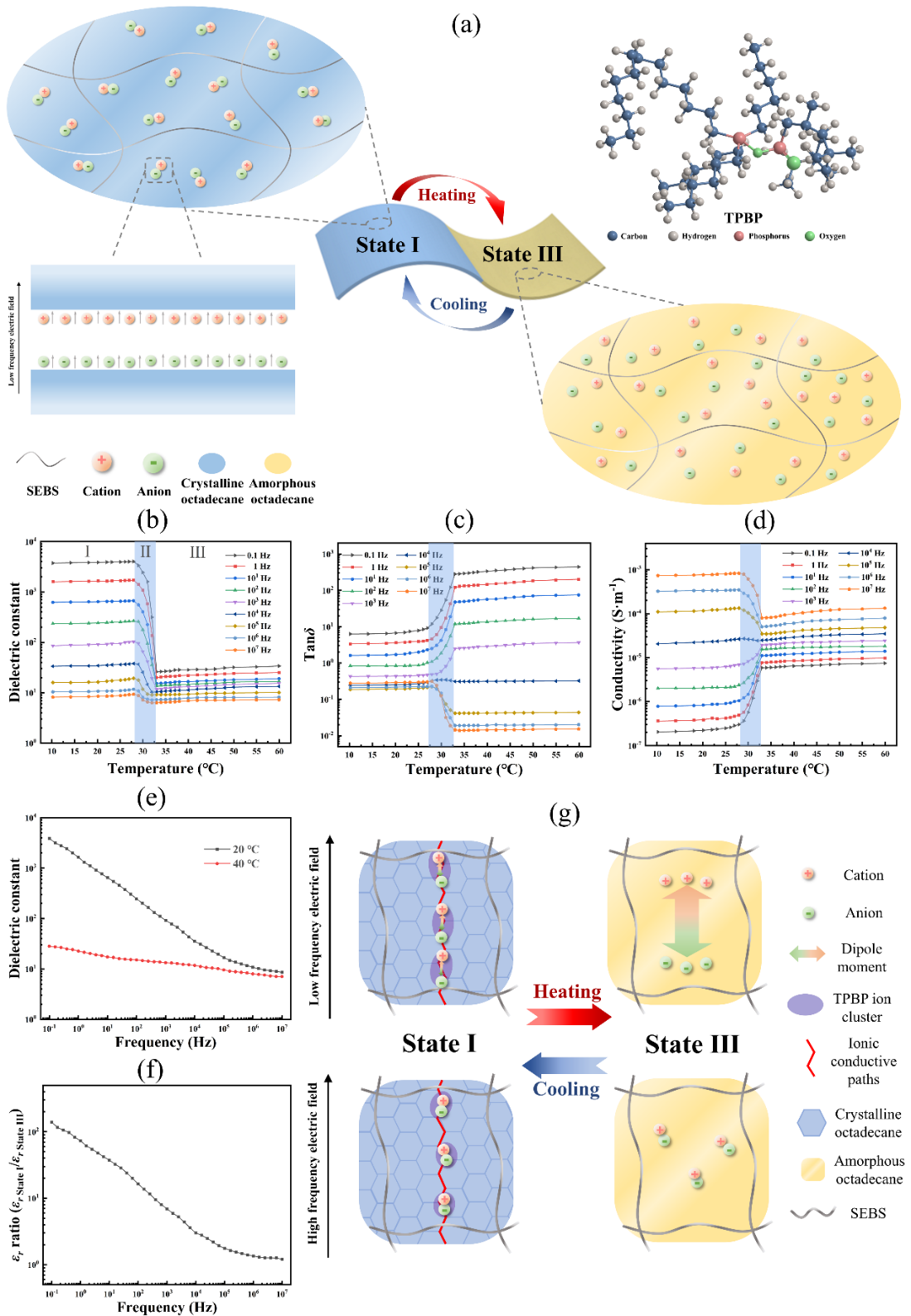On August 26, Advanced Functional Materials, an international top journal in the field of materials, published online the important progress by associate professor Ming Jiang’s team in the School of Material Science and Engineering in the field of thermo-responsive dielectric materials, which was titled as “Ultra-Tough Room-Temperature Dielectric Switching Ionic Gels with Long-Cycle Stability” (DOI:https://doi.org/10.1002/adfm.202207452). WTU is the first signatory; associate professor Ming Jiang is the only corresponding author; graduate student Yutie Gong in the School of Material Science and Engineering is the lead author. The paper was sponsored by National Natural Science Foundation of China (51503158).

Abstract
As a favorable candidate for the next-generation smart electronic devices, thermo-responsive dielectric materials are faced with two crucial challenges: insufficient mechanical toughness and lack of the combination of promising dielectric switching properties, desired mechanical properties, and long-cycle stability. Herein, a new scalable strategy is proposed for designing thermo-responsive dielectric switching materials that simultaneously integrate the individual features, such as promising dielectric switching properties, outstanding mechanical properties, and great cycle stability, into one gel, based on a new dual dielectric switching mechanism induced by interfacial structure evolution. The ionic gel can readily achieve a superb combination of distinct reversible dielectric bistability, a high dielectric switching ratio above 150, a ≈15 °C wide thermal hysteresis loop, and tunable room-temperature dielectric transition behavior, impressive high ductility, desirable high mechanical strength, record-high stability of at least 1000 cycles. Such an all-in-one design enhances the adaptability to multiple application scenarios, durability, and a lifetime of the dielectric switching gels. Together with the facile fabrication process and recyclable thermoplastic system, thereby contributing to cost and energy saving, this research provides a feasible and sustainable strategy for constructing highly desirable thermo-responsive dielectric switching materials.

